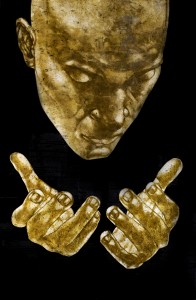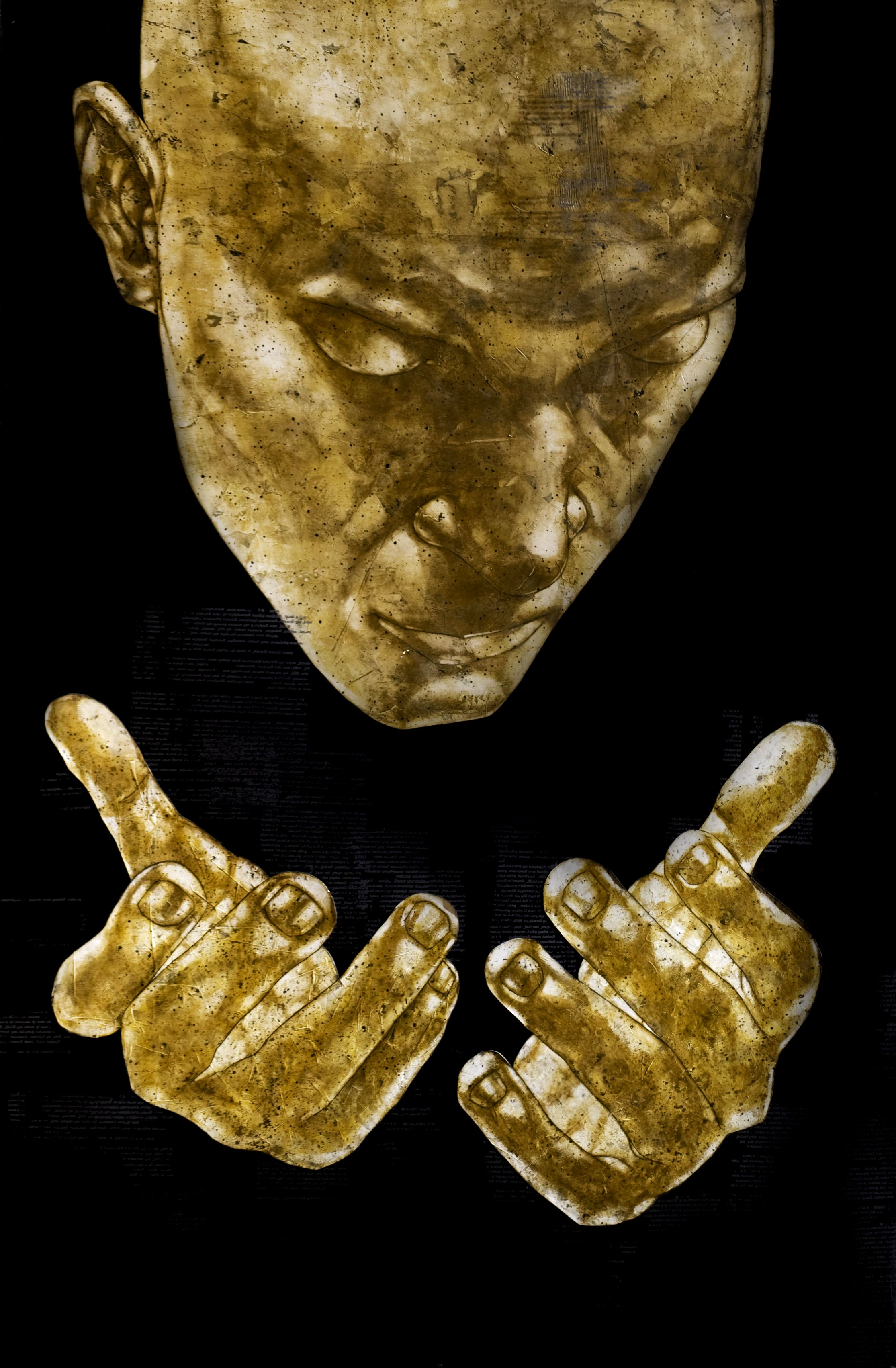
(Photo courtesy of Al Masar Gallery )
The Al Masar gallery in Zamalek is showcasing the latest collection of young artist Kareem Al Qurity, called Passing Faces. The artist was inspired by the faces in the crowds during the revolution and political events of the past two years.
Al Qurity grew up around art: “During my childhood my father was interested in practicing sculpture and he has always cared about my own and my siblings’ self expression through art. His specialisation was psychological health and child’s psychology through drawing.”
His childhood experience assisted him during his college years: “It helped me to realise a new dimension to art while I was studying at the Faculty of Art Education. I studied many subjects there other than the artistic specialisations of sculpture and painting, such as creative psychology and the effect of art on society through studying anthropology and sociology. In addition, the syllabi were daring and there was a great space for self-expression with material and without restriction on the artistic method.”
He used different materials throughout his current exhibition to achieve certain effects. “In my black and white paintings I use coal, and in the smaller works I use pastel. As for the paintings that are exhibited in the hallway, these are some of my older work and I used multiple materials, such as oil and acrylic on wood and canvas. In the coal paintings I use coal powder with coal pencils and in the soft paintings I use pastel over textured paper.”
The collection is a series of portrait paintings that express contemporary situations in Egypt. We asked Al Qurity to explain his vision for the collection. “They were faces that were printed in my memory, I summoned them from my optical storage and from daily observation. [The collection] with all its social, political and religious connotations was made in sculptural way. The faces’ features differ but the external lines remain the same. I think the collection is a new stage in my work because it depends on the psychological traits of the characters with varying optical features,” said Al Qurity.
Asked about the darkened pupils in all the paintings, Al Qurity explained: “The art of portrait depends on the eyes as an essential key to understanding the personality and to recognise it. My confirmation of the darkness of the eyes helped me unify the surrounding atmosphere of the characters and make it mysteriously anonymous, meaning they share the same bleakness and the same fate.”
The artist shared the only artist he considers worthy: “Abdel Hady Al Gazar is the only artist that expressed the society beyond fakeness and embellishment,”
When asked what we can expect from him in the future Al Qurity said: “I am currently trying my hand at sculpture for the first time and I don’t know yet what the outcome will be.”




